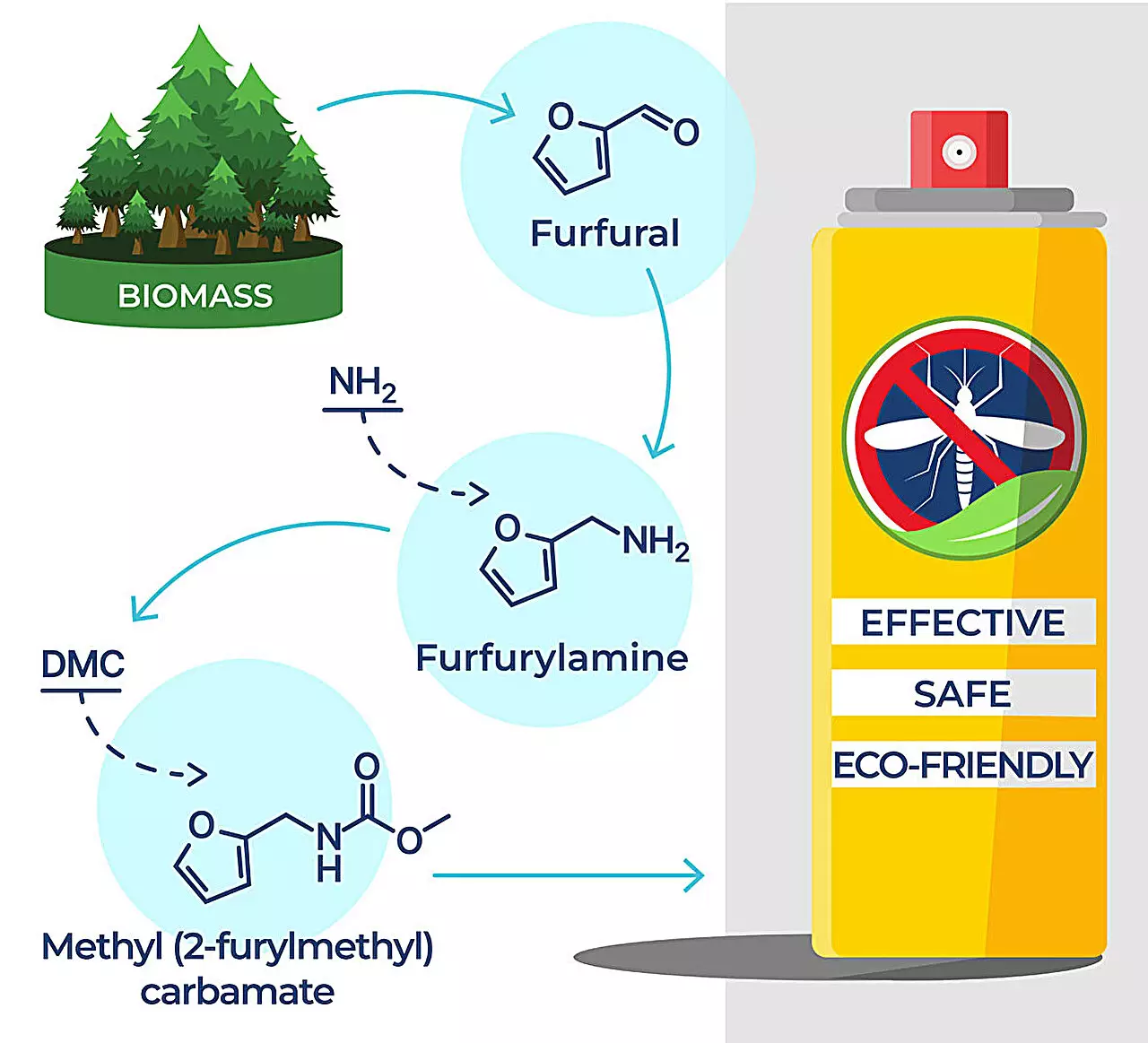As the world grapples with the pressures of feeding an ever-growing population, estimated to surpass 8.2 billion by 2024, the intersection between agricultural productivity and environmental stewardship has never been more critical. Traditional pesticides, while effective in safeguarding crops, continue to pose a significant challenge: they not only target pests but often endanger beneficial species and ecosystems. However, a groundbreaking initiative from researchers at the University of Delaware promises a paradigm shift in pest control methods, aiming for an eco-friendlier approach that maintains agricultural productivity without the associated environmental costs.
The University of Delaware’s esteemed team, led by Professors Dion Vlachos and Michael Crossley, has made significant strides in developing new, active insecticidal ingredients derived from biomass materials like wood pulp, straw, and corncobs. This innovative process not only addresses pest control needs but also leverages materials that would typically be viewed as waste. According to Sunitha Sadula, a key scientist in the research, these novel bio-based molecules act as “bridging molecules,” bridging the gap between harmful synthetic pesticides and desirable ecologically sustainable practices.
This unique synthesis process was meticulously crafted to harness commercially available plant-based atoms and strategically graft them with specific functional molecules. Such precision allows the researchers to create targeted insecticides that minimize ecological impact while effectively combating pests, thus presenting an elegant solution to a long-standing agricultural issue.
The research team undertook a rigorous approach to validate the efficacy of their newly synthesized compounds using well-known test subjects like the lesser mealworm beetle. This pest often wreaks havoc on crops, making it a suitable candidate for testing new insecticides. The results were promising: their bio-based molecules exhibited death rates comparable to conventional, synthetic insecticides, signaling a significant step forward in pest control technology.
Crossley, who participated in these efficacy evaluations, was particularly impressed with the potential the research holds for offering more targeted and less harmful alternatives to existing pesticides. He noted that the chemical modifications involved in their process could lead to entirely new insecticidal properties, significantly diverging from the characteristics of current pesticides known for their broader ecological harm.
Beyond mere effectiveness, the sustainability aspect of the UD-developed insecticides is noteworthy. The research utilizes lignocellulosic biomass, which is abundant and renewable, further enhancing the validity of their approach in the fight against food waste. With approximately 991 million tons of dry lignocellulosic biomass in the U.S. annually, this research holds the promise of turning an environmental liability into a valuable resource.
Cost-effectiveness is another edge for these new compounds. Early technoeconomic analyses indicate that the novel furfural-based compounds being developed are significantly cheaper—by two to four times—than existing pesticide ingredients rooted in fossil fuels. This affordability opens doors for farmers and agricultural businesses, particularly in a market often characterized by escalating pesticide prices.
Encouragingly, one of the unexpected benefits found during the research was the comparatively low toxicity of these compounds to aquatic organisms. The unique chemistry of the UD-developed molecules tends to favor aquatic environments, which means they are less likely to accumulate in soil or enter organisms such as plants and fish. This quality could facilitate the removal of pesticide residues more effectively, merely by washing produce—an appealing characteristic for both consumers and environmental advocates.
Furthermore, this pioneering method emphasizes the importance of sustainability not only in the chemical synthesis but also in thinking strategically about ecological interactions within agricultural ecosystems. By potentially replacing harmful substances with eco-friendly alternatives, the research team demonstrates that greener agricultural practices can be achieved while still addressing the critical issue of pest management.
As the University of Delaware team advances their findings, they are making strides toward broader applications of their methods. A notable development is their intention to file an international patent on the innovative synthesis method, imparting a protective measure around their eco-friendly insecticide technology. Crossley eloquently remarked on the implications of transforming what was once viewed as waste material into something beneficial and proactive for the agricultural sector.
The research from the University of Delaware marks a pivotal point in sustainable agriculture. The focus on bio-based, less harmful pest control methods offers more than just a solution to pest management—it offers a glimpse into a future where agriculture harmonizes with ecological principles, fostering a healthier planet while ensuring that food production mechanisms remain robust. As the world moves forward, this research could very well redefine pest control practices and how resources are utilized in agriculture.

